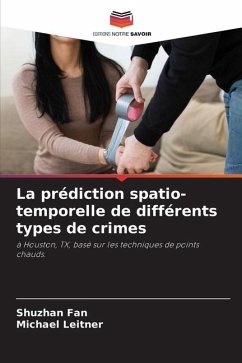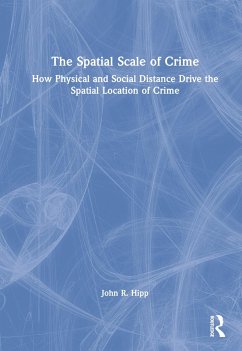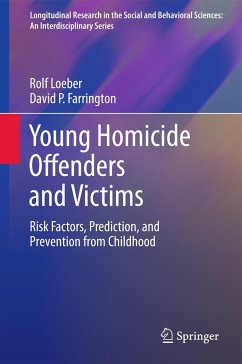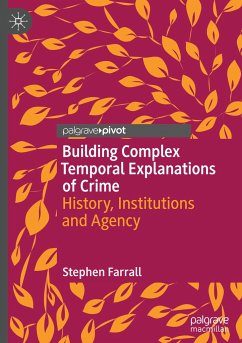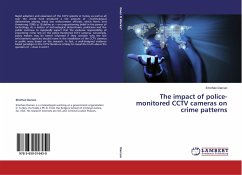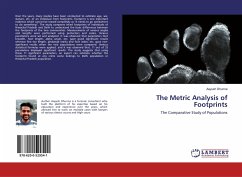
The Spatial- Temporal Prediction of Various Crime Types
In Houston, TX Based on Hot-Spot Techniques
Versandkostenfrei!
Versandfertig in 6-10 Tagen
27,99 €
inkl. MwSt.

PAYBACK Punkte
14 °P sammeln!
A series of hotspot mapping theories and methods have been proposed to predict where and when a crime will happen. Each method has its strengths and weaknesses. In addition, the predictive accuracy of each hotspot method varies depending on the study area, crime type, parameter settings of each method, etc. The predictive accuracy of hotspot methods can be quantified by three measures, which include the hit rate, the predictive accuracy index (PAI), and the recapture rate index (RRI). This work applied eight hotspot mapping techniques from the crime analysis field to predict crime hotspot patt...
A series of hotspot mapping theories and methods have been proposed to predict where and when a crime will happen. Each method has its strengths and weaknesses. In addition, the predictive accuracy of each hotspot method varies depending on the study area, crime type, parameter settings of each method, etc. The predictive accuracy of hotspot methods can be quantified by three measures, which include the hit rate, the predictive accuracy index (PAI), and the recapture rate index (RRI). This work applied eight hotspot mapping techniques from the crime analysis field to predict crime hotspot patterns. In addition, these hotspot methods were compared and evaluated in order to possibly find a single best method that outperforms all other methods based on the three predictive accuracy measures. Identifying the single best method is carried out for all Part1 Crimes combined and individually, for five of the nine Part 1 Crime. In addition to the spatial analysis, a spatial-temporal analysis of the same crime dataset was conducted to investigate the distribution of crime clusters from both the space and time dimensions.



